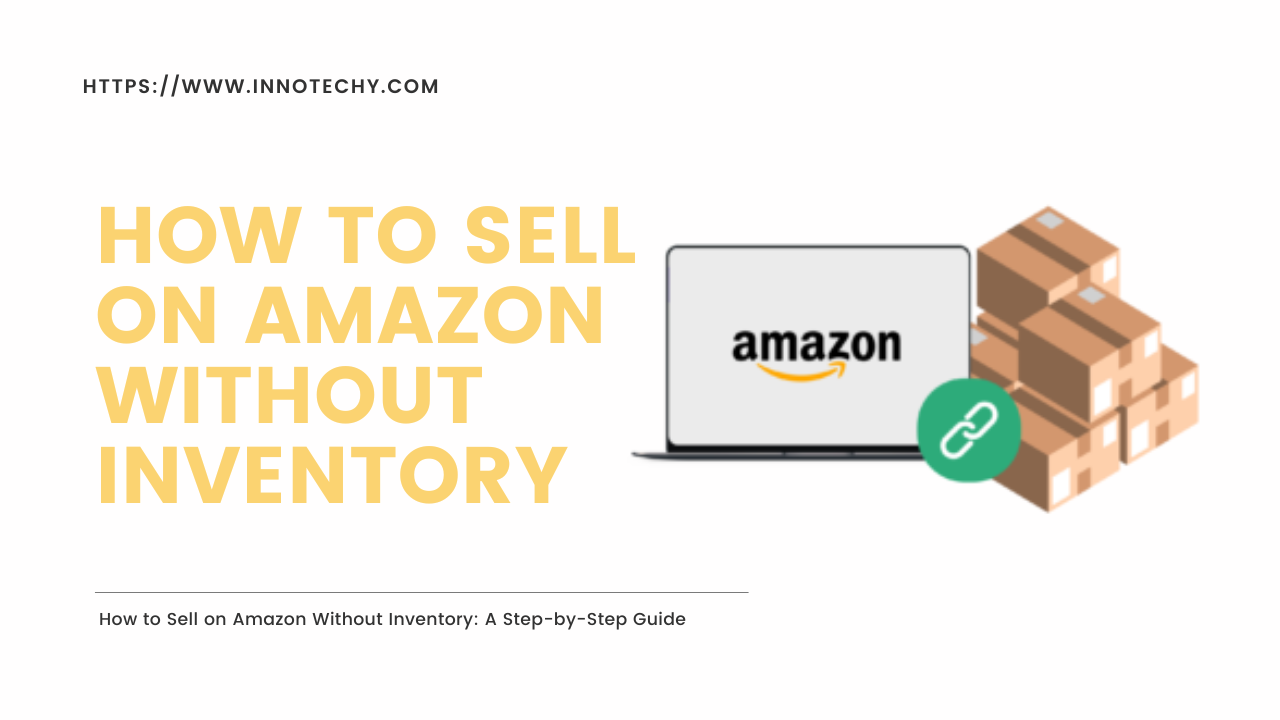Introduction
Have you ever wanted to start an e-commerce business and sell products on Amazon, but the idea of managing inventory and storage is holding you back? Well, the good news is that you can sell on Amazon without actually holding any physical inventory. This method is known as “drop shipping,” and it allows you to run an online store without the hassle of stocking products yourself. In this comprehensive guide, we will walk you through the process of how to sell on Amazon without inventory using the dropshipping model.
1. What is Dropshipping?
Dropshipping is a business model in which you, as the seller, don’t keep any inventory in stock. Instead, when a customer places an order, you purchase the product from a third-party supplier who then ships it directly to the customer. This means you never have to handle the products physically, saving you time and money on storage and fulfillment.
2. Why Choose Dropshipping on Amazon?
Amazon is one of the largest and most popular e-commerce platforms worldwide, attracting millions of customers every day. By leveraging Amazon’s vast customer base and reputation, you gain immediate access to a massive audience without having to build your own standalone website.
3. Finding Profitable Niches
The key to success in dropshipping on Amazon is to find profitable niches. Research various product categories and identify items that have a high demand but relatively low competition. Tools like Google Trends and Amazon’s Best Sellers can help you discover trending products.
4. Identifying Reliable Suppliers
Choosing the right suppliers is crucial for your dropshipping business. Look for suppliers with a proven track record of reliability and efficiency. Check their product quality, shipping times, and customer reviews to ensure a positive experience for your buyers.
5. Setting Up Your Amazon Seller Account
To start selling on Amazon, you need to create a seller account. Choose between a Selling Plan whether individual or professional, depending on your sales volume. Pay attention to Amazon’s guidelines and policies to avoid any violations that could lead to account suspension.
6. Listing Your Products
Once your seller account is set up, it’s time to list your products on Amazon. Provide detailed and accurate product information, including high-quality images and relevant keywords. The goal is to attract potential customers and rank higher in Amazon’s search results.
7. Optimizing Product Titles and Descriptions
Craft compelling and keyword-rich product titles and descriptions. Use relevant keywords that potential customers are likely to use when searching for products. However, avoid keyword stuffing as much as you can, as it can negatively impact your search rankings.
8. Pricing Your Products Competitively
Price your products competitively to attract customers. Research the prices of similar products on Amazon and set your prices accordingly. Consider offering discounts or promotions to entice buyers.
9. Managing Orders and Shipping
As orders come in, forward them to your suppliers for fulfillment. Keep track of the shipping status and provide customers with timely updates. Amazon’s seller dashboard can help you monitor orders and shipping details efficiently.
10. Handling Customer Service
Customer service is vital for your business’s reputation. Respond promptly to customer inquiries and address any issues or complaints professionally. Positive reviews and satisfied customers can boost your seller performance and attract more buyers.
11. Dealing with Returns and Refunds
Inevitably, you’ll encounter returns and refund requests. Have a clear and transparent return policy in place. Work closely with your suppliers to facilitate the return process smoothly.
12. Leveraging Amazon Advertising
Amazon offers various advertising options to promote your products. Sponsored Product Ads and Sponsored Brand Ads can help increase visibility and drive traffic to your listings. Allocate a budget for advertising to maximize your sales potential.
13. Monitoring Your Performance Metrics
Regularly monitor your performance metrics on Amazon, such as Order Defect Rate (ODR), Customer Feedback Rating (CFR), and Late Shipment Rate (LSR). Keeping these metrics in check ensures that your seller account remains in good standing.
14. Scaling Your Dropshipping Business
Once your dropshipping business gains momentum, consider scaling up. Introduce more products, expand into new niches, or even explore selling on multiple online platforms.
15. Tips for Success and Common Pitfalls
- Stay updated with Amazon’s policies and guidelines.
- Provide excellent customer service to build trust.
- Regularly analyze sales data to identify trends and opportunities.
- Be cautious of sudden market shifts and adjust your strategy accordingly.
Conclusion
Selling on Amazon without inventory through dropshipping is a viable and rewarding business model for aspiring entrepreneurs. By carefully selecting profitable niches, partnering with reliable suppliers, and optimizing your product listings, you can create a successful online business with the potential for significant growth.
Frequently Asked Questions
Is dropshipping legal on Amazon?
Yes, dropshipping is allowed on Amazon as long as you comply with the platform’s policies and guidelines.
Can I dropship from any country to sell on Amazon?
Yes, you can dropship products from various countries to sell on Amazon. However, consider shipping times and costs to ensure a positive customer experience.
Do I need a business license to start dropshipping on Amazon?
It depends on your location and local regulations. Some regions may require a business license, while others do not.
What are some common challenges in dropshipping on Amazon?
Some challenges include inventory management, supplier reliability, and intense competition.
Can I sell branded products through dropshipping on Amazon?
Selling branded products without proper authorization is against Amazon’s policies and can lead to account suspension.





